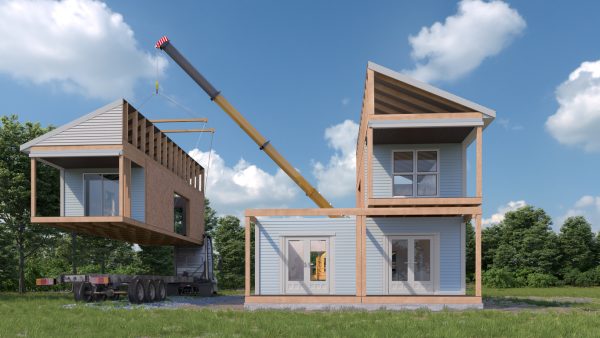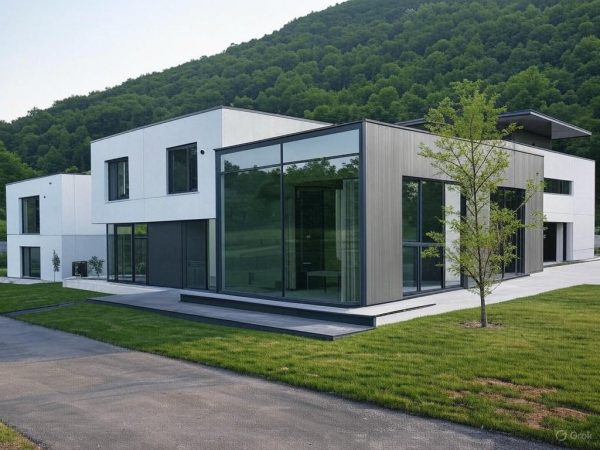The future of modular homes is here. From AI design to off-grid living and 3D printing, explore the top modular home trends shaping 2025 and beyond.
If you are curious about the future of construction, then there’s a good chance it’s centered in the modular home industry. These aren’t the same old boxy buildings of yesteryear, as today’s designs are stylish, environmentally friendly, and evolving faster than any other method of home construction. And, if 2025 has anything to say about it, the future of modular homes is looking sleeker, smarter, and more sustainable.
These aren’t your grandpa’s prefabs. We’re talking about houses that are not only built differently, but also think differently. Whether you’re dreaming about a cabin in the woods, or a sleek urban retreat that was simply printed yesterday–yes, I do mean printed–you are going to want to keep on reading.
So, let’s dive into the juicy trends that are shaping 2025 and beyond.
The Modular Boom: What’s Driving the Shift?
There is a modular home boom these days, and for good reason–traditional homes are expensive, slow, and inefficient.
Affordability Meets Agility
Modular buildings are being produced faster, with lower labor rates and fewer headaches than any other construction method. Think of it like IKEA furniture, if only that new bookcase was a fully insulated home with solar panels and smart tech built. People today want homes that go up in weeks, not months, and modular construction delivers on that need.

The Great Downsizing
Of course, while we can build some amazingly large modular homes today, most people are choosing to go smaller instead. It’s all part of the tiny home movement and burnout from the consumerism of the 80s and 90s. More and more folks across the country and around the globe are choosing to live in smaller, smarter spaces. They are beginning to understand that there is less to clean and worry about. The tiny home rebellion has been going on for more than a decade now, and it’s only growing bigger.
Robotics: Builders of the Future
We see robots in every single aspect of our lives. From that little dinky disc that vacuums your living room, the couriers that deliver food in the city, and even large-scale factories that assemble our cars. Robots are the future, and they’re already starting to appear on job sites around the globe. Industry experts predict that household robots will soon become as common as cars, transforming daily life. These robots could also play a key role in manufacturing, such as producing modular homes, streamlining construction and making housing more accessible.
Photo by Michael Martinelli on Unsplash
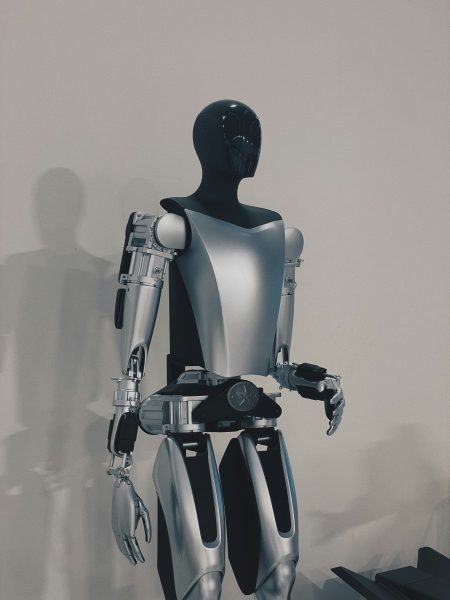
Precision, Not Perspiration
But why robots? Well, for starters, they don’t get tired. They don’t have any need for a lunch break. They don’t accidentally install a window upside down. If you have never worked with a construction crew, you might be surprised at how often that actually happens. Modular homes are built in factories, using some of the most advanced robotic arms and automated systems available today. This automation helps to streamline the construction process, which leads to higher precision and less waste. Not only are robotics good for your wallet, but they’re also good for the planet.
Drones & Delivery
Picture this, if you will, you order a new modular cabin for your remote property. A few days later, a team of drones arrives and begins surveying your property, using LIDAR to take measurements of the site. A few days later, an entire plan is sent to your inbox for final approval. And, within a month a small skeleton crew arrives on your property with a robotic crane that lowers your home onto its foundation. While sci-fiction now, this process is not far off from being science-fact.
3D Printing: Walls, Roofs… Whole Houses?
A few years ago, 3D printing was in its infancy. The machines were quite small and limited in scale. They could work with a few different types of plastic materials, but your options were rather limited. Today, all of that has changed because you can 3D print just about anything these days.
A Printer as Your Contractor?
You want to talk about large-scale 3D printers? How about one that can function as your contractor? Large-scale units are currently being used around the world to extrude concrete-like materials in layers to form walls, foundations, and even decorative façades. The result is a superfast construction method that opens the door to a whole new world of design possibilities. Why not rounded walls? How about improving the insulating capability of the wall by using honeycomb structures?
Sustainability in Every Layer
Then, of course, there is sustainability. Companies that are using 3D printers to build homes are using recycled materials and low-carbon concrete blends. There is less waste, fewer transportation costs, and a lot less pollution. Best of all, is that the 3D printer can work 24/7 if it’s needed.
AI-Driven Design: Smarter Spaces by Default
We can’t talk about the future of modular home construction without also discussing AI-driven design. We’ll always have a need for architects and engineers, because somebody has to check the designs that are already being created by artificial intelligence.
Personalized Blueprints in Minutes
With AI tools, you can now create modular home layouts based on your lifestyle, your location, the local climate needs, and your personal preferences. Do you want a two-bedroom home that maximizes sunlight and fits on a sloped plot in the bush? There’s an algorithm for that. It might even suggest how to place your solar panels to optimize sun exposure, decrease shade, and improve energy production.
Adaptable Living
It’s all about adaptability. More homeowners are taking advantage of the Internet of Things, installing smart lighting, thermostats, security systems, and more. AI is just another part of that natural evolution. Just imagine, if you will, a house that notices when you’re cold before you do. Or what about a house that reconfigures itself when your kids move out? I know, this does sound a little bit crazy, but there are companies currently working on modular interiors that can literally shift and adapt using AI-driven robots.
Off-Grid Living: Unplugging Is the New Plug-In
One of the biggest things people love about modular homes is their sustainability. People are going off-grid in record numbers these days, and they are looking for solar-powered homes, composting toilets, and rainwater harvesting systems. The off-grid boom is reshaping families across the nation.
Independent and Intentional
The reason for this is that modular homes are uniquely suited for off-grid setups. They are built using controlled manufacturing techniques that allow the integration of this off-grid technology right from the very start. It’s not uncommon to find modular homes that already include solar panels, battery banks, grey water systems, and more. And, the ability to place modular units in some of the most remote locations with almost no environmental impact, makes them the home of the future. With advances in satellite internet and wireless connectivity, these homes enable residents to live and work virtually anywhere, redefining the boundaries of sustainable living.
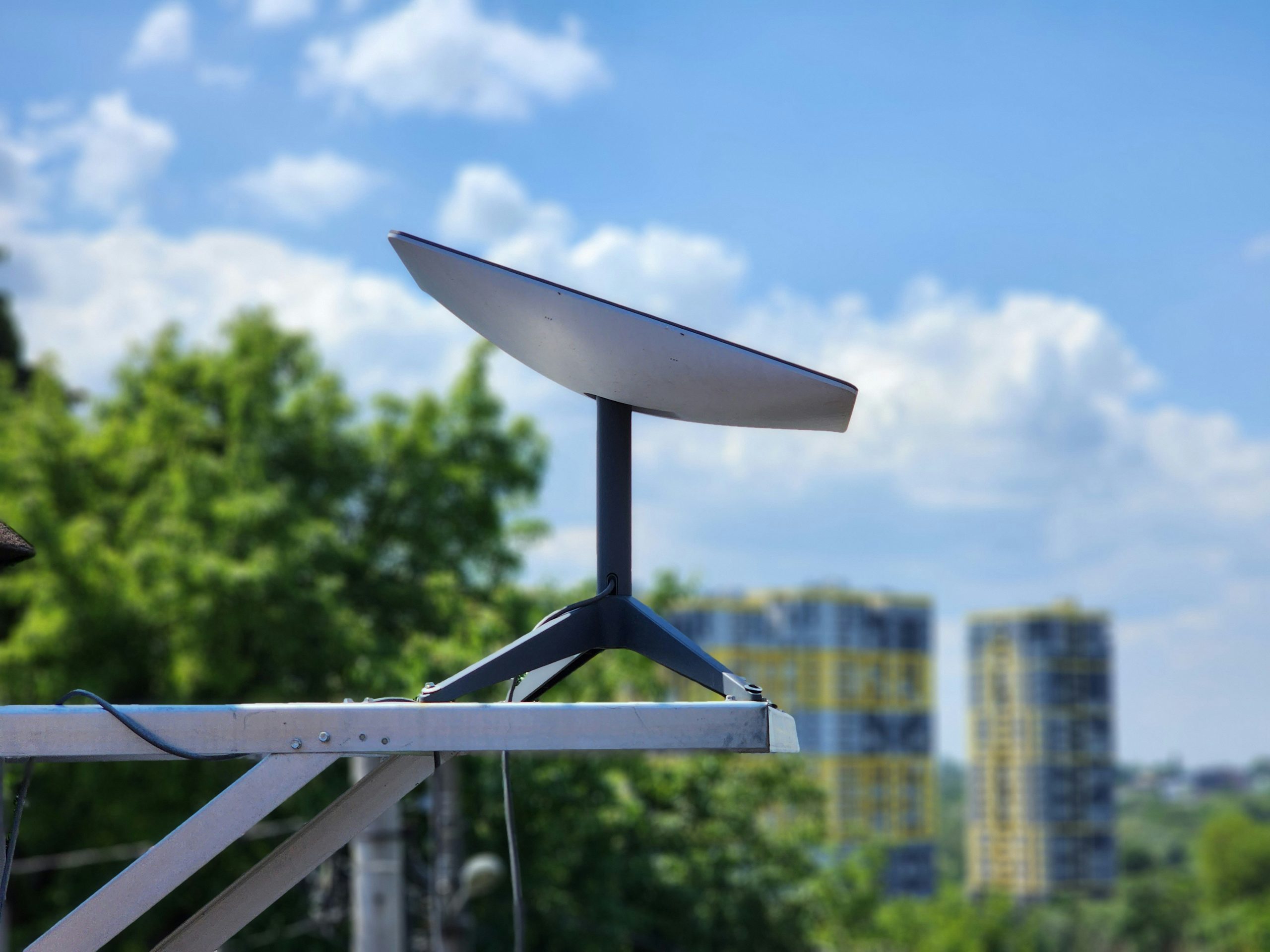
Communities of Off-Gridders
Just imagine, if you will, entire communities that are completely off-grid. Believe it or not, small communities of modular homes are popping up everywhere, sharing their own small power grid, gardens, and even Internet access. And the people there are thriving.
Small is the New Smart: The Rise of the Mini Modular
Okay, so we’ve already talked about the tiny home movement a little bit, but let’s get into the nitty-gritty. Today, small is the new smart. Tiny homes, micro cabins, and even shipping container homes are popping up everywhere. It’s impossible to even check your Facebook feed without seeing at least one a day.
Downsizing, But Make It Luxurious
Mini homes are not cramped sheds with composting toilets– okay, some of them are. But most of them are sleek, efficient, and surprisingly elegant. Designers are utilizing every inch of space with intention. They feature fold-down desks, Murphy beds that disappear into the wall, and kitchens with an infinite array of secret compartments. Today’s modular homes are like living inside a Swiss Army knife. And, when choosing to go with a small home, you’ll be using a lot fewer resources, which ties back into the sustainable house movement.
Anecdotal, But Telling
In recent years, there has been an uptick in people who are swapping out their 3000 square foot suburban home for a 400 square foot mini marvel in the woods. People are falling in love with the sustainable modular home construction methods thanks to their flexibility, freedom, and simplicity. The trends in 2025 reflect a shift in values. People today want a better quality of life and not just a larger space.
Sustainable House Innovations You Can’t Ignore
All right, let’s circle back and talk about sustainability. We can’t talk about the future of modular home construction without discussing the importance of going green.
Solar, but Smarter
Sure, solar panels have been around for a while. But today, they are being integrated into everything. Depending on where you live, you might even be able to find modular homes that feature solar shingles. Many units today come with built-in battery walls, and some are capable of adjusting the panel angles throughout the day to capture the most amount of light. The future of modular homes is powered by the sun, and the designs are looking radiant.
Insulation that Thinks
Of course, you can’t have a green home without insulation that keeps the inside and outside climates separated. Every year, new materials are being developed that are more than just simple foam and fluff. There are scientists right now who are working with self-regulating materials that can adapt to increasing temperatures. We are seeing phase change materials that are capable of absorbing and releasing heat, and allow your walls to breathe but not leak.
Materials with Meaning
We think of sustainability, we also need to rethink what we build with. This is why companies that build homes using 3D printers take advantage of hempcrete technologies. And, in the modular home industry, recycled steel and reclaimed wood are helping reimagine home construction and interior design.
What to Watch: Modular Home Trends 2025 and Beyond
So, what should we keep an eye out for in the coming decade? Here are the top trends of 2025 and beyond:
AI-Designed Living Spaces
Artificial Intelligence is changing the way that living spaces are designed. The technology can tailor a home to your individual preferences and lifestyles, creating a home that is so much more than just a shelter.
3D-Printed Structures
3D-printing is no longer just a novelty in the home construction industry, it is quickly becoming the norm. The 3D-printed project in the Netherlands, Project Milestone, was finished only a few years ago, and people are already living in those homes today.
Robotics-Led Construction
Then there are the robots. Robots are everywhere, and they are pushing the construction industry ahead at breakneck speeds, showing that homes can be built at high rates and unimaginable precision.
Smaller, Smarter Homes
The homes these days are getting smaller yet smarter. They are completely reshaping both the urban and rural landscapes. And, they are providing people with a retreat rather than just another square home in a sea of cookie-cutter shapes.
Off-Grid Capabilities
Then there are the off-grid capabilities. It’s no longer just another niche; living off-grid has become mainstream around the globe. And, we’re not just talking about living off-grid in the middle of the bush, we’re also talking about living in major cities, without ever having to rely on the power company to supply our energy needs.
Off-Grid Capabilities
Then there are the off-grid capabilities. It’s no longer just another niche; living off-grid has become mainstream around the globe. And, we’re not just talking about living off-grid in the middle of the bush, we’re also talking about living in major cities, without ever having to rely on the power company to supply our energy needs.
Photo by Flo on Unsplash
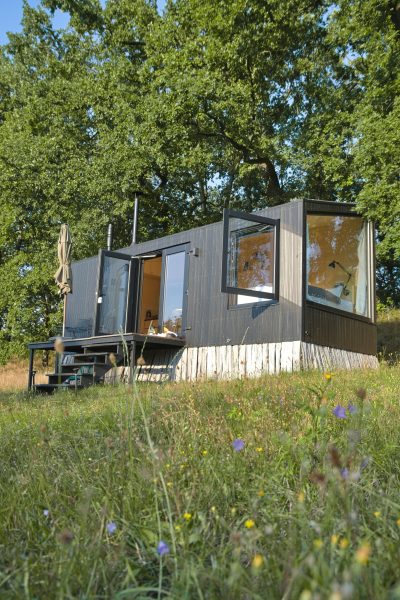
Eco-Materials and Tech
And, we can’t forget about the green, eco-materials, and technology that are driving this innovation to new heights. Modular homes are redefining what a home means to people from all walks of life and every corner of the globe.
Final Thoughts: The House of the Future Isn’t Just Different—It’s Better
The future of modular homes is simply exciting. It’s not just about the technology or the design. Rather, it’s about the freedom of choice and intentionality. The house of the future isn’t just different, it is a lot better. And, in 2025 and beyond, our homes are no longer going to be where we live, they are going to represent how we live.
So, whether you are a minimalist on a mission, an eco-warrior looking for something special to take you off-grid, or someone who is just tired of high labor costs and long construction times, modular just might be your very next move.
